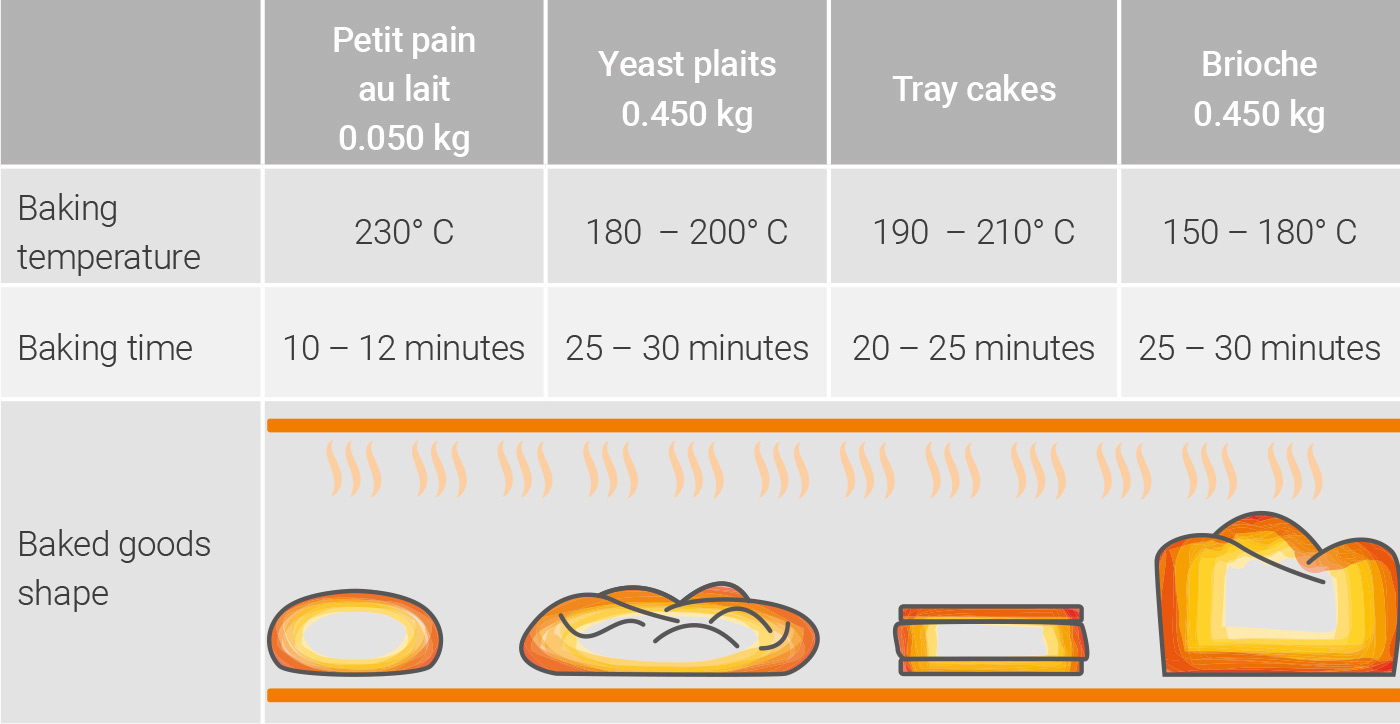The baking process represents the final and very important processing step. On the one hand, it is important to stabilize the shape and crumb of the baked goods in an optimum way, on the other, the baked goods should be given an appealing colouring, a thin crust and a moist crumb. Too short or too long baking detracts from the quality considerably. The baking temperatures and baking times are based on the dough weight and the shape of the baked goods, but also on the typical content of sugar according to the recipe. Smaller dough pieces tend to be baked hotter and shorter, larger baked goods require cooler and longer baking. The common baking temperatures lie between 180° C and 230° C, but can, for certain specialities, be higher or lower.
Table 10.9: Baking temperatures and baking times for various baked goods from confectionery yeast doughs
Before baking, many baked goods from confectionery yeast dough are washed or sprayed with a glaze of whole egg or a glaze based on pea protein, glucose syrup and pregelatinized rice flour. In this way, the baked goods are given a golden-brown, shiny upper surface during the baking process.
Glazed baked goods are generally baked without steam. During baking in a moving baking atmosphere, in the rack oven for example, the baking temperature is lowered by 10 – 20° C and baking takes place giving a little steam.

